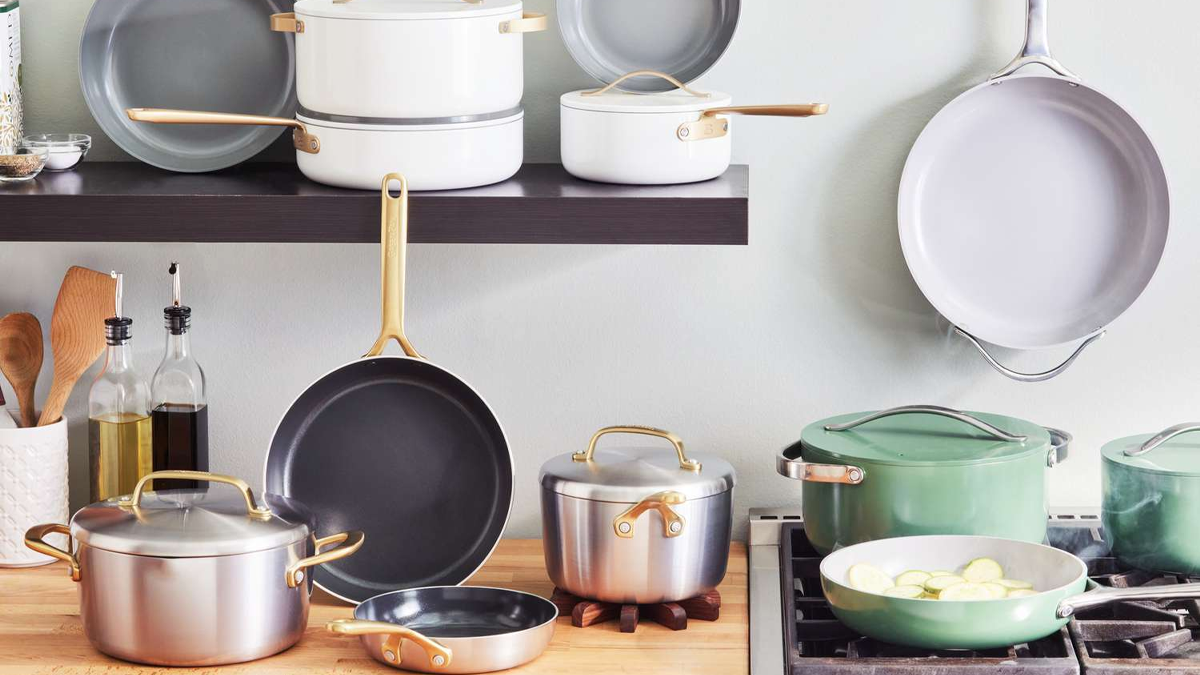When purchasing cookware, there are several factors to consider. Should you buy a complete set or select individual pieces? What exactly do you need?
The primary considerations when choosing pots and pans are cost, quality, and material. After these, aesthetics, or how the cookware looks, becomes an important but subjective factor.
Ideally, cost, quality, and material will align perfectly, often when you invest a substantial amount. In cookware, the saying “you get what you pay for” frequently holds true. However, even with a limited budget, it’s possible to find quality cookware that is both functional and visually appealing.
Remember, just as you shouldn’t judge a book by its cover, you shouldn’t select cookware based solely on appearance. While shiny, new items can be enticing, cookware should first and foremost be functional. Having a matching 10-piece set is nice, but it doesn’t matter if your food sticks to the pan.
One common question is whether to buy a cookware set or individual pieces. There is no universal answer; it depends on the individual cook. Many opt for a 10 or 12-piece set to save a bit of money and simplify decision-making, but they often don’t consider whether the set meets their actual needs.
This choice can seem like the cheaper, easier option, especially for beginners who may not know what they need or how much to spend. Cookware companies understand this and often lure buyers with the promise of convenience. However, if you don’t carefully consider your needs, you might find yourself purchasing additional pieces later.
Before buying a cookware set, it’s advisable to review a list of essential pots and pans for every home cook, as some crucial items are not included in standard sets. If you still prefer a cookware set, here are some factors to consider:
What’s Included? Ensure you’re not just buying duplicate items in different sizes. Do you need both a 2-quart and a 3-quart saucepan, or can you manage with one?
What’s Missing? If you frequently make soups and stocks, a stockpot is essential. Does the set include one, and is it of a sufficient size? Most sets also don’t include items like cast-iron skillets, Dutch ovens, or grill pans, so you may need to purchase these separately.
Number of Items: Sets are often marketed by the number of pieces, including lids. A 10-piece set might only contain 5 or 6 pots and pans. Assess what you need and will use regularly.
Material of the Set: Are you considering stainless steel or non-stick cookware? Stainless steel is versatile, but if you’re cooking eggs, you might still need a non-stick pan. For searing meat, a cast-iron pan is essential.
The key to buying cookware is to evaluate the usefulness of each item. A set might not be cheaper than buying individual pieces if you only use some of the included items.
Regardless of whether you buy a set or individual pieces, focus on these factors:
- Cost: Set a budget and stick to it. Buy only what you can afford, but keep quality in mind. As the saying goes, “If you buy cheap, you buy twice.” Investing in high-quality cookware can save money in the long run. Look out for sales and consider brands that sell directly to consumers to cut costs.
- Quality: Quality often correlates with cost, but you don’t have to overspend for reliable, everyday cookware. For example, Ballarini’s Granitium non-stick pans are durable and reasonably priced, offering a good balance of quality and affordability.
- Material:
- What do you cook? Choose cookware material based on what you cook most often. Cast-iron is great for high-heat grilling, while stainless steel is ideal for soups and stews.
- Cooking Surface: Consider your stovetop type—induction, gas, or electric—and select compatible cookware.
- Handles and Lids: Ensure handles and lids are oven-safe if needed. Tight-fitting lids are essential, and glass lids allow you to monitor cooking progress.
- Aesthetics: While aesthetics matter, functionality should come first. For example, Lodge and Finex both offer high-quality cast-iron skillets. The Finex skillet is more expensive and visually distinct with its coiled handle, but it doesn’t necessarily cook better than the more affordable Lodge skillet. Choose based on your budget and preferences.
In summary, whether buying a cookware set or individual pieces, focus on how each item will serve your cooking needs. With thoughtful consideration, you can find cookware that balances cost, quality, and style.

